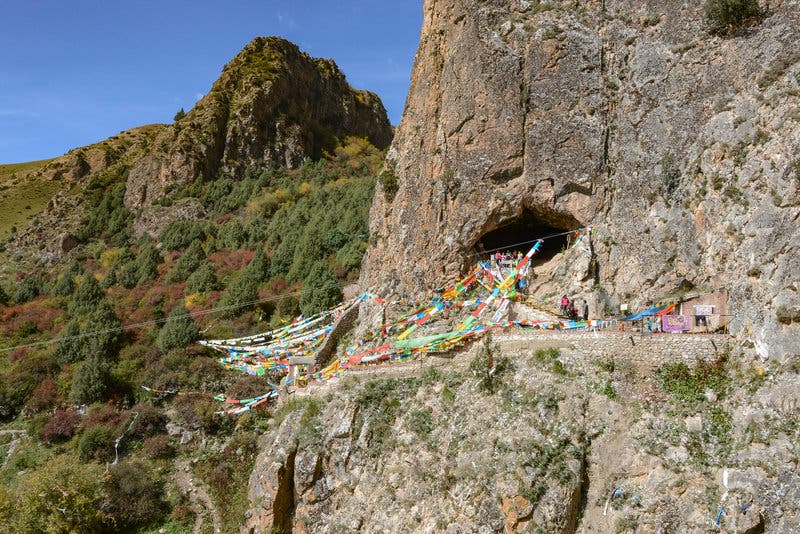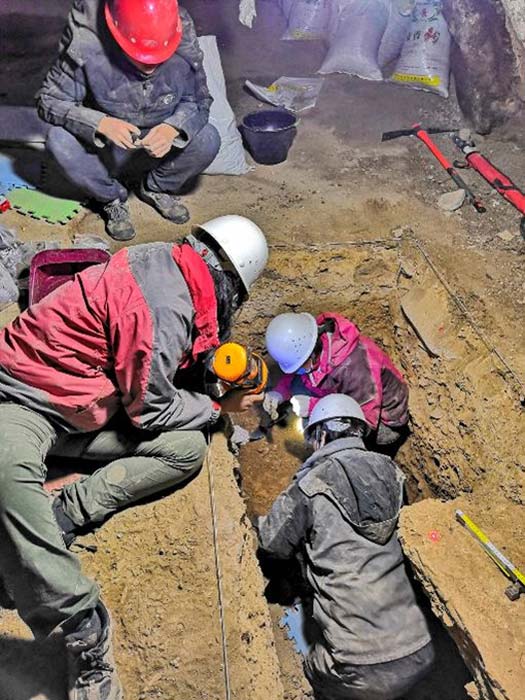
The story of human evolution is not a straight line but rather a series of branching events. We now know that Homo sapiens were contemporaries not only with their famous cousins, the Neanderthals, but also with Homo floresiensis, the Denisovans (a species that lived around a cave in the Altai Mountains of western Siberia), and according to a recent study with fifth species, called Homo luzonensis. The Denisovans, which were first discovered in 2010, are particularly intriguing and mysterious since scientists could study them only from a few bone fragments and teeth — until now.
Reporting in a new study published in Nature, researchers say they’ve identified a jawbone that belonged to a Denisovan that lived more than 160,000 years ago in the Himalayas.

The lower jawbone with two remaining teeth was actually found three decades ago in the Baishiya Karst Cave on the Tibetan Platea. The Tibetan monk who found the stunning remains deep in the Himalayan mountains gave it to a local revered as a living Buddha, who passed it on scientists. A team of European and Chinese researchers has been carefully studying the jawbone ever since.
Researchers were not able to extract DNA from the mandible but managed to extract proteins from one of the molars. Their sequencing firmly identified the fossil as Denisovan — the first time researchers have identified the physical remains of a Denisovan outside the cave that gave them their name, Denisova Cave, in Siberia.

Ancient tools and animals bones showing cut marks were also retrieved from the same cave which stands almost 3,350 meters (11,000 feet) up on the plateau. If these remains were indeed left by Denisovans, they suggest that the ancient humans had adapted to high-altitude, low-oxygen environments long before the regional arrival of modern Homo sapiens. In fact, these traits were likely passed down to the modern human gene pool through interbreeding between the two species. We know this likely happened because DNA extracted from the Denisovan teeth in Siberia had genes shared with modern humans, among them one that is common in Tibetans, allowing them to live at high altitudes with low oxygen levels.
Scientists were always puzzled about how Tibetan populations came to carry a Denisovan gene seeing as the Siberian cave wasn’t at a high altitude. The new findings have now connected the dots.
In the future, the team of researchers, which includes members from Lanzhou University in China and the Max Planck Institute in Germany, hopes to find further Denisovan fossils in China which might still hold viable DNA.






